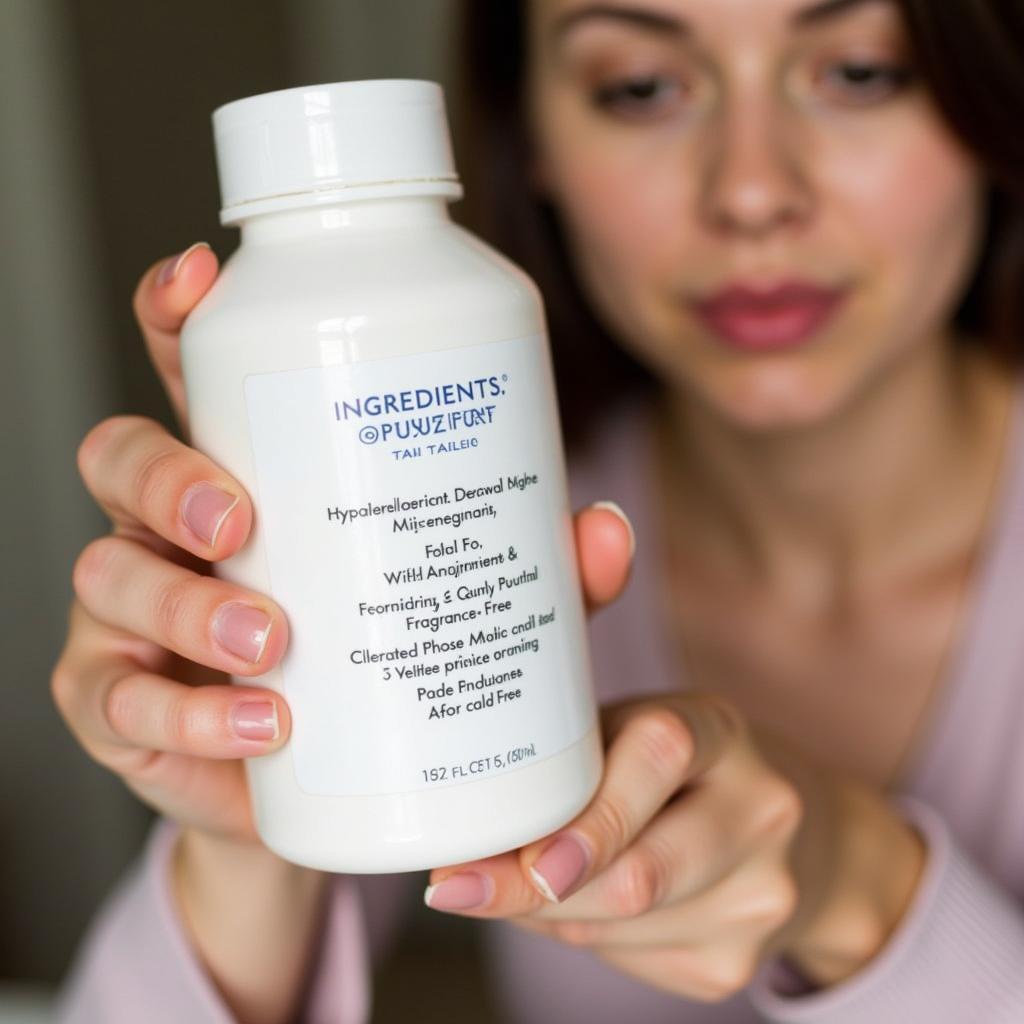Baby Spa Talc Powder has been a staple in baby care for generations. Its soft texture and absorbent properties make it a popular choice for keeping babies dry and comfortable. But with so many options available, it’s essential to understand what makes a good baby talc powder and how to use it safely and effectively.
Understanding Baby Spa Talc Powder
Baby spa talc powder is designed specifically for a baby’s delicate skin. It helps to absorb excess moisture, prevent diaper rash, and reduce friction. Choosing the right talc powder can contribute significantly to your baby’s comfort and overall well-being.
Choosing the Right Baby Spa Talc Powder
When selecting a baby spa talc powder, look for products that are hypoallergenic and free of harsh chemicals, fragrances, and dyes. These ingredients can irritate sensitive skin and cause allergic reactions. Opt for talc powders that are dermatologist-tested and specifically formulated for babies.
 Checking Baby Talc Powder Ingredients
Checking Baby Talc Powder Ingredients
Talc vs. Talc-Free Options
Traditionally, baby powder was made with talc, a naturally occurring mineral. However, concerns have been raised about the potential presence of asbestos in talc, leading to the development of talc-free alternatives. These options often use cornstarch or arrowroot powder as a base and offer similar benefits in terms of absorbency and smoothness.
“Parents should be aware of the potential risks associated with talc-based powders and consider opting for talc-free alternatives,” advises Dr. Emily Carter, a leading pediatrician in New York. “Cornstarch and arrowroot powder offer safe and effective solutions for keeping babies dry and comfortable.”
How to Use Baby Spa Talc Powder Safely
While baby spa talc powder is generally safe, it’s crucial to use it correctly to avoid potential risks. Here’s a step-by-step guide:
- Wash and dry your baby’s skin thoroughly. Before applying talc powder, ensure the skin is clean and dry, especially in the diaper area.
- Shake a small amount of powder into your hand. Avoid shaking the powder directly onto your baby, as this can create a cloud of dust that they might inhale.
- Gently apply the powder to your baby’s skin. Use a light touch and avoid applying too much powder, which can cake and irritate the skin.
- Avoid the face and genital area. Do not apply powder directly to your baby’s face or genitals to prevent inhalation or irritation.
- Keep the powder away from your baby’s reach. Store the powder in a safe place where your baby cannot access it.
“Remember, less is more when it comes to baby powder,” reminds Dr. Carter. “A thin layer is all you need to absorb moisture and prevent chafing.”
Other Uses for Baby Spa Talc Powder
Beyond diaper changes, baby spa talc powder can also be used for other purposes:
- Soothing skin irritations: A light dusting of talc powder can help to relieve minor skin irritations, such as chafing and prickly heat.
- Freshening up: Talc powder can be used to absorb excess sweat and keep your baby feeling fresh and comfortable.
- Preventing shoe odor: A sprinkle of talc powder in shoes can help to absorb moisture and prevent unpleasant odors.
Conclusion: Choosing the Best for Your Baby’s Skin
Choosing the right baby spa talc powder is an important part of ensuring your baby’s comfort and well-being. By understanding the different types of talc powder available and following safe usage practices, you can keep your baby’s skin healthy and happy. Prioritize hypoallergenic, talc-free options and always consult your pediatrician if you have any concerns.
FAQ
- Is talc-free baby powder safe? Yes, talc-free baby powder is generally considered safe for babies.
- Can I use baby powder on my newborn? Yes, but use it sparingly and avoid the face area.
- What are the signs of a baby powder allergy? Redness, rash, itching, and difficulty breathing are potential signs of an allergy.
- How often should I use baby powder? Use it as needed to keep your baby’s skin dry, especially during diaper changes.
- What can I use instead of baby powder? Cornstarch or arrowroot powder are common alternatives.
- Can baby powder cause respiratory problems? Inhalation of any powder can potentially cause respiratory irritation, so it’s important to avoid creating a cloud of dust.
- How should I store baby powder? Store it in a cool, dry place out of reach of children.
Need support? Contact us 24/7 at Phone: 0373298888, Email: [email protected] or visit us at 86 Cau Giay, Hanoi.